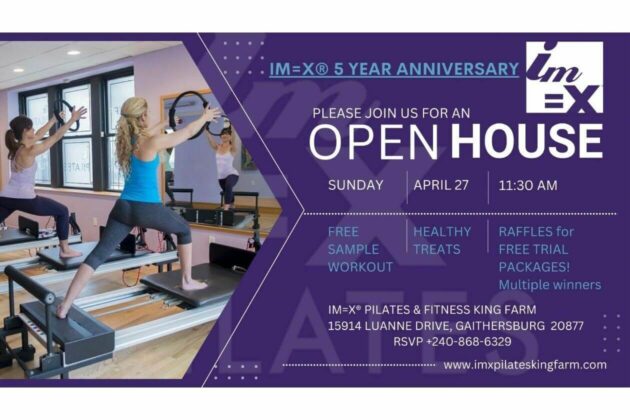Dr. Daniel Hampton at Sentara OrthoJoint Center at Sentara Northern Virginia Medical Center in Woodbridge reserves surgery as a last resort for patients with chronic knee pain.
But when Karen Cribb, the Patient Advocate at Sentara Medical Center, became Dr. Hampton’s patient, he told her that eventually, she would need to have knee replacement surgery. After weighing the benefits and risks of surgery, they decided to try alternative therapies such as anti-inflammatory drugs, physical therapy, and injections first to see if they could manage her osteoarthritis, pain, and limited mobility issues without surgery.
Injections of corticosteroids provided temporary relief for Karen. However, when the medication wore off, the pain grew unbearable. They then tried a series of four shots designed to build cushioning around the knee, but that did not prove effective for her either.
“Those treatments work for different people to varying degrees,” said Dr. Hampton. “When it’s time for surgery, your body will tell you.”
Limitations as the Deciding Factor for Knee Surgery
Karen grew up playing sports like basketball and softball during a time when there were no professional coaches ensuring the safety of younger athletes. As she got older, her knees began to bother her.
“I truly didn’t pay attention to the pain until I couldn’t participate in family activities the way I used to,” said Karen.
She finally realized her mobility restrictions as she listened to her husband and daughters plan a big family vacation to New England for her upcoming birthday. Well-intentioned, her husband and daughters repeatedly said, “Mom can’t do that so we won’t do it.”
Karen acknowledged that they were restructuring the fun activities around her pain. During her vacation, she was disappointed when she could not get to the top of a lighthouse in Maine or climb the steps at Bunker Hill in Boston. Karen wanted to be active and pain-free so she could enjoy time with her family, and she resolved to do something about it.
Karen knew the time had come for surgery when she began to fall and make trips to the emergency room that caused her to miss family activities. The rest of Karen’s body was now compensating for her injured knee, and she eventually threw out her back. Her daughter was getting married soon, and she did not want her knee problems to interfere with the wedding. It was time to consider knee replacement surgery.
“Throwing out my back because of my knee pain was an eye opener,” Karen said. “That was the decision–making moment for me.”
Karen and Dr. Hampton set her surgery date for April 4, 2016.
Knee Replacement Success
“There is a very high success rate with knee replacement surgery,” Dr. Hampton said. “About 95 percent of patients do well with replacements.”
Patients who opt for knee replacement have an intense recovery period with several months of extensive physical therapy. “Additionally,” Dr. Hampton said, “there is a six-month check-up and another follow-up appointment at one year with periodic x-rays. Patients are then typically seen annually.”
Surgery requires a close partnership between the patient, surgeon, and rehabilitation therapists. The patient must be motivated to adhere to the therapy regimen and stay active, even when there are some stiffness and pain. Walking, hiking, swimming, and other low impact exercises are excellent ways to stay active for those recovering from knee replacement surgery, and they carry the added benefit of potential weight loss, which further reduces pressure and strain on the knee.
Recovery After Knee Replacement Surgery
The surgery itself was not painful for Karen. Her family was incredibly supportive, encouraging her to stay active, helping her recuperate, and driving her to her medical appointments during her recovery. When Karen returned to work, the staff at Sentara was also very supportive.
“This is what we do, for our patients and each other,” said Karen.
She and her coworkers even shared a good laugh about her bedazzled cane that she used during her recovery. “Go gaudy or go home,” Karen joked.
Karen completed her physical therapy in August 2016, four months after her surgery. Overall, she describes the surgical experience as positive. Karen is grateful for her improved quality of life.
“I really appreciate Dr. Hampton and the therapists saying that I can’t hurt the knee, but I will hurt myself if I don’t stay active,” Karen said. “It feels great to feel good.”
For more information, visit Sentara OrthoJoint Center at Sentara Northern Virginia Medical Center.
Recent Stories

A fire on Easter evening displaced five residents from a single-family home in the 400 block of Smith Street, near Brooke Road in Stafford County. Fire and rescue crews from Stafford and Fredericksburg responded to the scene just before 6 p.m. and quickly brought the blaze under control within 20 minutes.
Inspired by local physicians who were among the nation’s first to adopt the concierge medicine model, Northern Virginia is now a hub for its surging popularity. These leading physicians are redefining the patient experience with same-day appointments, direct availability, unhurried visits, and deeply personalized care:
After almost 40 years in practice, Manassas-based Internist John Cary, MD’s change to concierge medicine enabled focused attention for each individual, and the launch of his innovative diet program for those with type 2 diabetes. “The goal is to promote enough weight loss to reach an acceptable A1C of 6% with no medication,” he explains. “Achieving that can take several months of very close follow up. As I tell my patients, we are in this together.”
Jay Tyroler, MD considers his patients quite literally as family. “I believe there’s nothing more honorable than helping patients when they’re sick, or scared, or feeling vulnerable, and I care for them exactly as I would my loved ones.” Whether for a specialist referral, urgent health issue or ongoing follow up, “My patients know I’m always just a phone call away.”

Get More from your Fitness with IM=X® Pilates & Fitness King Farm!
Help us Celebrate our 5 Year Anniversary by joining our OPEN HOUSE
When: April 27th 11:45AM
Your Weight Matters National Convention
Hosted by the Obesity Action Coalition (OAC) since 2012, this highly-anticipated gathering is the nation’s leading gathering focused on empowering individuals with science-based education, support and practical tools for managing weight and improving health.
This unique Convention truly has something
Van Metre 5K Run
Participate in the 33rd Annual Van Metre 5K Run—a race that goes further than 3.1 miles, where every stride you take supports Children’s National Hospital. The Van Metre 5K Run donates 100% of proceeds to Children’s National Hospital and has






